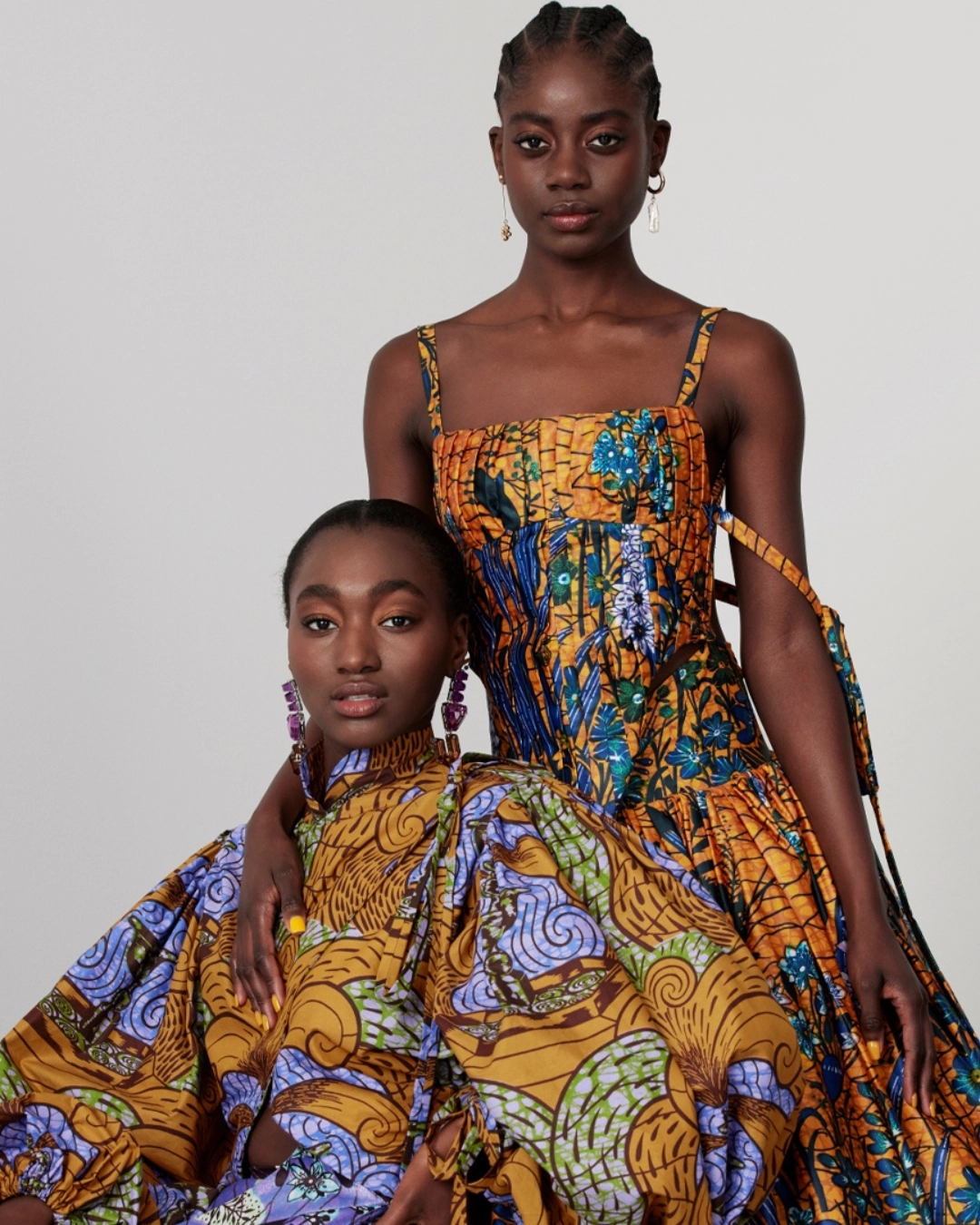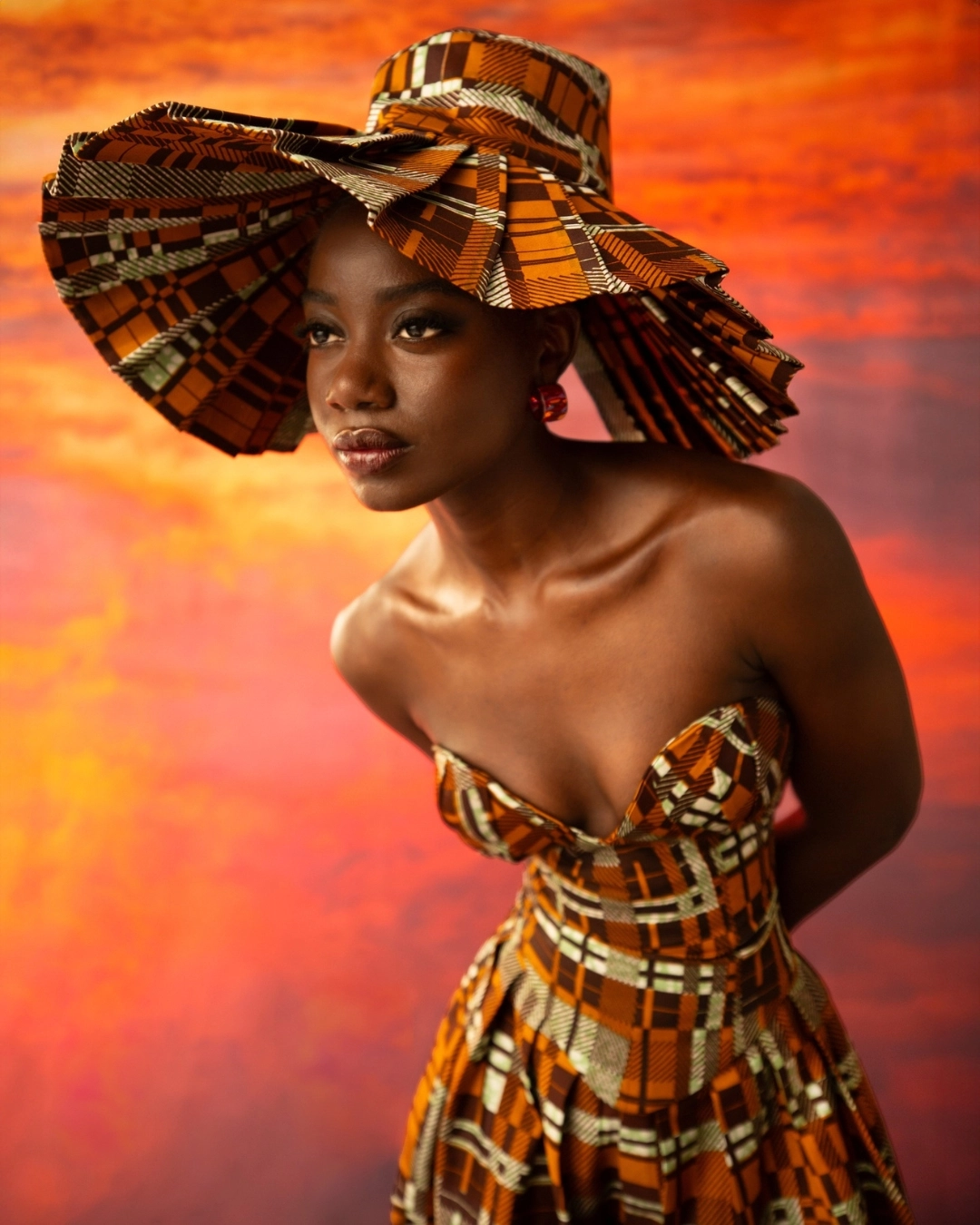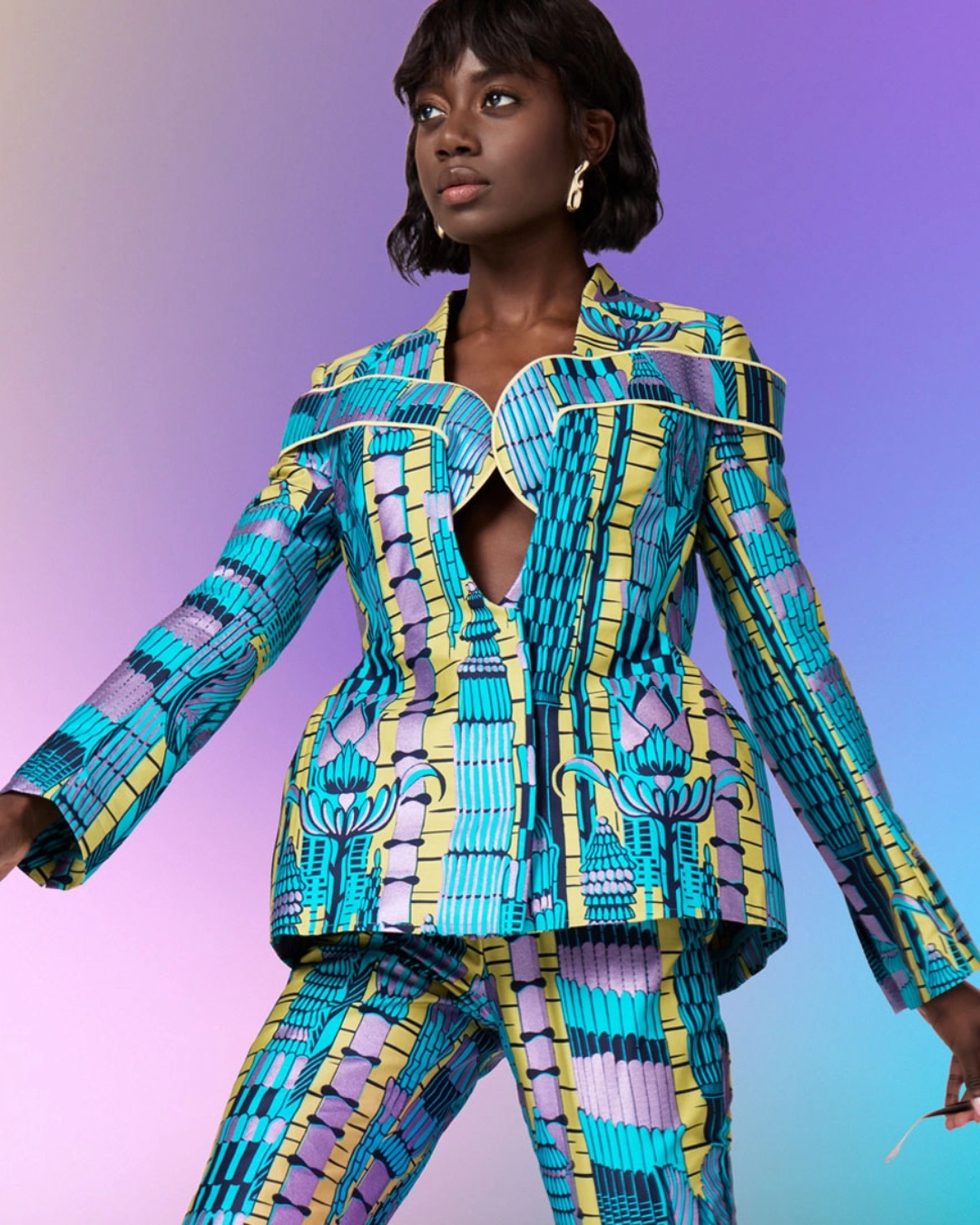In the fast-paced world of fashion, the choice of fabrics plays a fundamental role. Among those who have succeeded in transcending cultural and geographical boundaries, wax occupies a unique place. Originating in the Netherlands, this fabric is now considered by many to be the vibrant embodiment of African fashion. It has become a symbol of cultural identity and a standard-bearer global fashion sphere. But it is also contested because it overshadows local know-how and craftsmanship. Indeed, the Dutch fabric wax has become the emblem of African fashion. In this article, we explore how wax has evolved from a simple low-cost textile to an African fashion staple that is both appreciated and contested. It is highlighted by various designers, influencers and trendsetters on Africa Fashion Tour.
Origins of wax: a fascinating historical journey
Wax has its roots in the Netherlands, where it was first produced in the 19th century. Inspired by Javanese batiksimported from Indonesia by Dutch settlers, this fabric was first manufactured to imitate these intricate patterns, but using industrial methods.
The Indonesian diaspora and textile industrialization
Originally, batiks were made by hand, requiring meticulous craftsmanship. The Dutch, inspired by these techniques, sought to reproduce them industrially. The result was the waxThe name derives from the method of applying wax to the fabric before dyeing. The Indonesian population did not embrace this new fabric proposition, and importing wax into Indonesia was not a successful operation.
Arrival in Africa
It was in the 1960s that wax began to gain popularity in West Africa. Imported by European traders and colonizers, this fabric quickly became popular thanks to its bright colors and bold patterns. It also offered a more durable and less expensive alternative to traditional African fabrics, often reserved for the elite.
Dutch wax, an emblem of African fashion
Nowadays, wax is an integral part of the African wardrobe. It’s much more than just a fabric; it’s an affirmation of cultural identity for many Africans. Its diversity of patterns and colors expresses social messages, economic status and even religious or political affiliations.
If we can acknowledge the hegemony of wax in Africa, we question the notion of identity. How can we accept the fact that an imported fabric is a symbol of identity, associated with a territory, a heritage?
Symbols and meanings
Over time, wax producers have learned to create specific collections for the African market. And consumers have made the designs their own. Wax patterns are not just decorative; they tell stories and convey profound meanings. There’s a kind of dialogue between wax manufacturers and consumers. The fabric may be manufactured outside the continent, but it is studied, thought out and created to meet the expectations of an African consumer.
For example:
- The “maiden breast A motif representing feminine power and fertility.
- The “Michelin” A tire-shaped print that symbolizes prosperity and movement.
- The “Wedding Flower Typically worn at wedding ceremonies, this motif represents love and union.
Socio-economic impact
Wax also plays a key role in the African economy. Many local entrepreneurs have taken up the manufacture of wax garments, creating employment opportunities and stimulating local economic growth. Powerful women traders have made their fortunes importing and reselling wax: the Nanas Benz.
Challenges and controversies in the wax industry
Although wax is widely celebrated, it is not without controversy. The wax industry is facing growing challenges, particularly in terms of Asian imitations and excessive commercialization.
Asian imitations
One major problem is the massive influx ofAsian imitations on the African market. These copies, often produced at lower cost and of very poor quality, threaten the local economy and devalue the perceived quality of wax. They also increase unfair competition, making it difficult for African producers based in Ghana and Côte d’Ivoire to maintain competitive prices and survive.
Excessive marketing
The excessive commercialization of wax also raises questions about authenticity and cultural integrity. The dialogue between local populations and producers is being lost. As wax becomes increasingly mainstream, some fear it will lose its traditional and cultural significance, becoming just another exotic motif on Western catwalks.
Will wax remain an emblem of African fashion?
Despite these challenges, the wax continues to assert itself as a pillar of African and global fashion. Its adoption by younger generations and its integration into contemporary styles show that it is here to stay.
Vlisco supports designers
Each year, Vlisco, the benchmark Dutch wax brand, collaborates with the avant garde of African designers to create collections in tune with the expectations of contemporary consumers. The Vlisco Fashion Fund supports emerging designers and couturiers in the process of developing a career in fashion. On the Vlisco website you can read:
By sharing our knowledge, expertise and access to our extensive network, we strive to help promising designers strengthen their skills and develop their own African fashion brands.
And it’s through these actions that wax, this Dutch fabric, has become the emblem of African fashion.
While some designers refuse to use wax, preferring locally-made fabrics such as kenke or bogolan, the subject of African identity through fashion remains at the heart of the debate.
A new wave of designers
A new generation of African designers redefines wax wax by incorporating it into modern silhouettes and innovative cuts, preserving its heritage while giving it a contemporary dimension. Africa Fashion Tour puts the spotlight on emerging talent, offering invaluable visibility to those who are reinventing African fashion, with or without wax.
In a nutshell, wax is much more than just a fabric; whether you wear it or not, you’re sending a message. It’s a style statement, a cultural statement and a symbol of belonging in the world. today’s fashion sphere. Whether on international catwalks or African streets, with or without wax, African fashion continues to captivate and inspire, cementing its place in the dynamic world of fashion.
Read also




